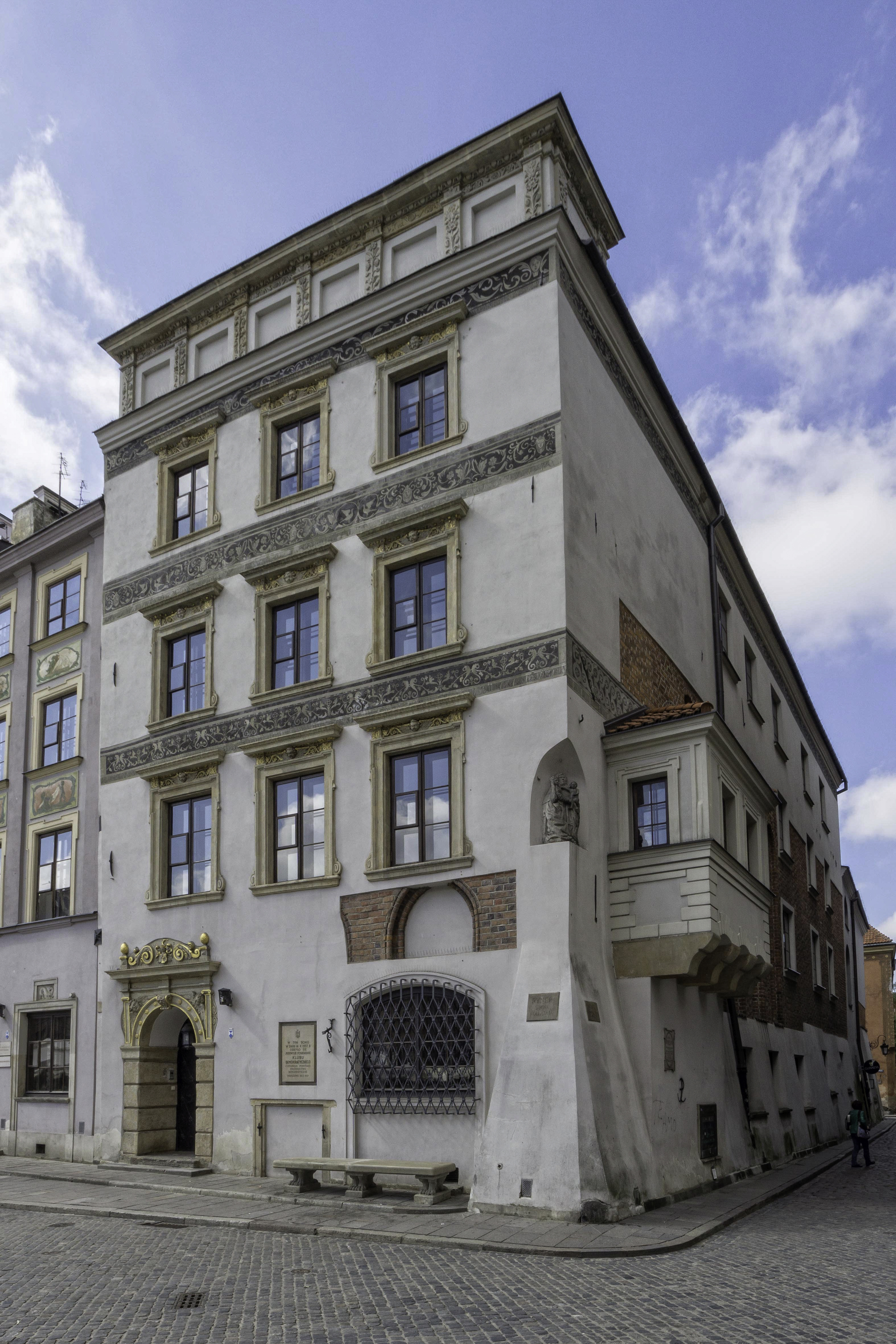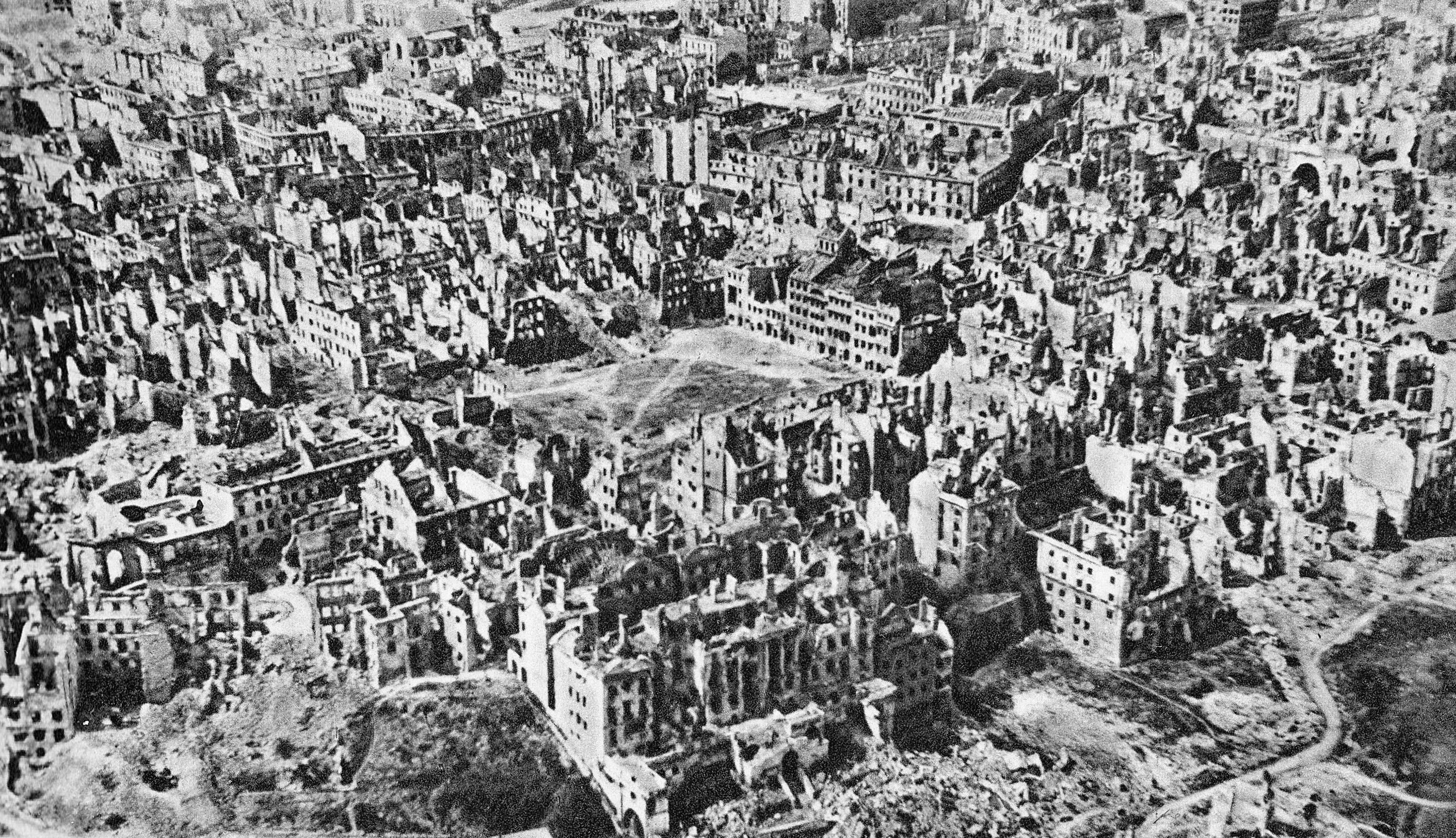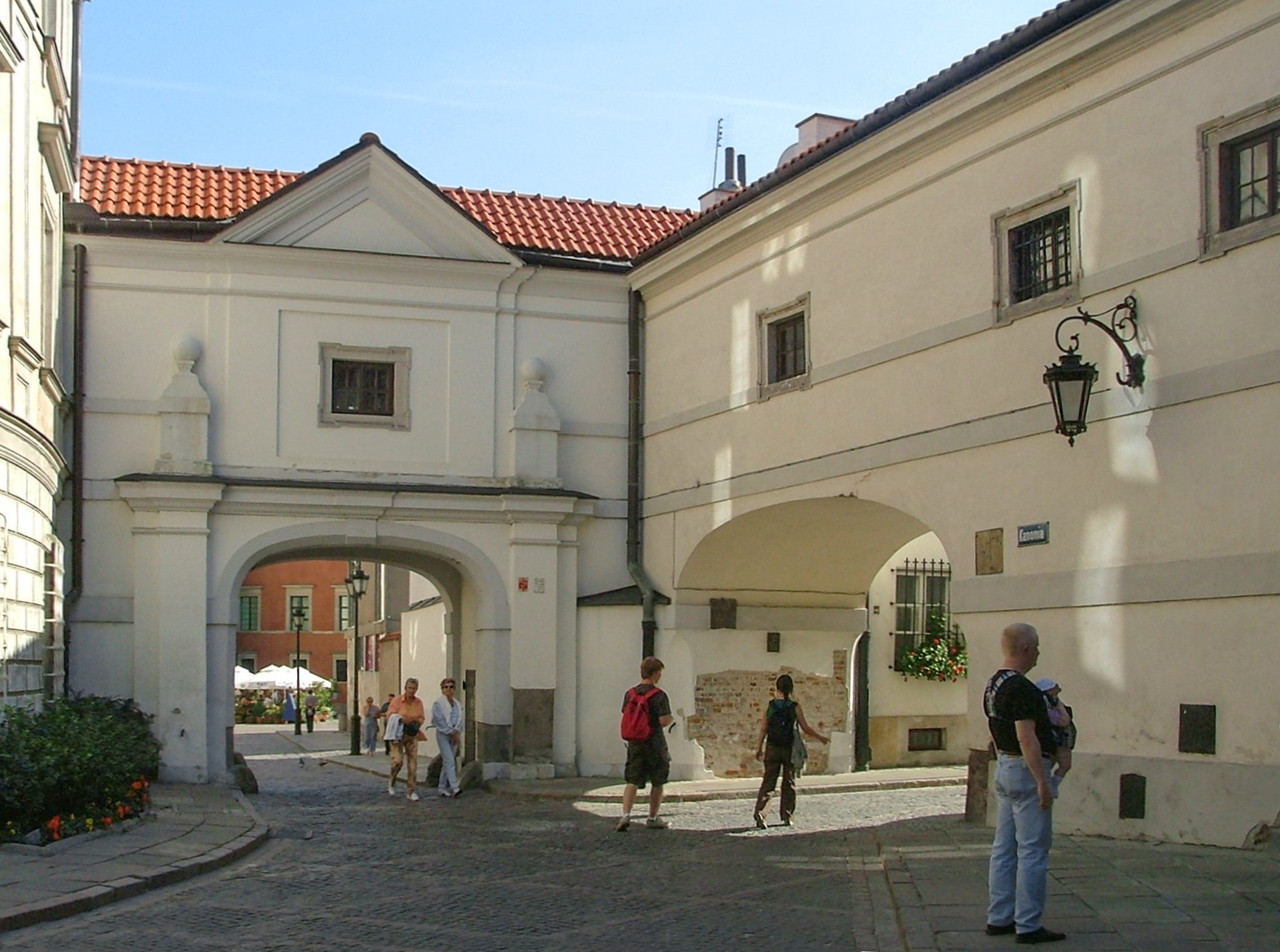Stare Miasto (Warsaw) on:
[Wikipedia]
[Google]
[Amazon]
Warsaw Old Town, also known as Old Town, and historically known as Old Warsaw,''Encyklopedia Warszawy''. Warsaw: Polish Scientific Publishers PWN, 1994, p. 806. ISBN 83-01-08836-2. is a neighbourhood, and an area of the City Information System, in the city of Warsaw, Poland, located within the district of ┼Ür├│dmie┼Ťcie. It is the oldest portion of the city, and contains numerous historic building, mostly from 17th and 18th centuries, such as the Royal Castle,
 The Old Town was established in the 13th century. Initially surrounded by an earthwork rampart, prior to 1339 it was fortified with brick
The Old Town was established in the 13th century. Initially surrounded by an earthwork rampart, prior to 1339 it was fortified with brick 

 Until 1817 the Old Town's most notable feature was the Town Hall built before 1429. In 1701 the square was rebuilt by Tylman Gamerski, and in 1817 the Town Hall was demolished. Since the 19th century, the four sides of the Market Square have borne the names of four notable Poles who once lived on the respective sides:
Until 1817 the Old Town's most notable feature was the Town Hall built before 1429. In 1701 the square was rebuilt by Tylman Gamerski, and in 1817 the Town Hall was demolished. Since the 19th century, the four sides of the Market Square have borne the names of four notable Poles who once lived on the respective sides:

 The
The
Warsaw 07-13 img04 Palace Square.jpg, Palace Square
Warsaw oldtown wide.jpg, Warsaw old town wide (''Rynek Starego Miasta'')
Warsaw Old Town, Warsaw, Poland - panoramio (74).jpg, Reconstructed townhouses
Droga na Star├│wk─Ö.jpg, Road to the Old Town
Warsaw Old Town, Warsaw, Poland - panoramio (66).jpg
Warsaw Old Town - Alley.jpg, An alley
Historical houses around Castle Square (9629390991).jpg, Historical houses around Castle Square.
Old Town Market Place with tourists (9632730776).jpg, Old Town Market Place with tourists.
Perełki architektoniczne..jpg,
Pomnik Syrenki na Starym Mie┼Ťcie2.jpg, Statue of the mermaid (Old Town).
Pozytywna energia..jpg,
Stare Miasto i pomnik.jpg,
Warsaw Old Town surrounded by the old medieval defensive walls (9629662853).jpg, Warsaw Old Town surrounded by the old medieval defensive walls.
Warsaw Old Town, Warsaw, Poland - panoramio (72).jpg,
Warsaw (28594040).jpg,
Var┼íava, Star├ę m─Ťsto, v─Ť┼żi─Źka.jpg, Old Town.
Image:4 Warszawa 12.jpg, '' St. John's Cathedral, 14th century''"Ko┼Ťcio┼éy w Warszawie - Stare Miasto"
List of churches located in the Old Town in Warsaw. Image:Ko┼Ťci├│┼é Matki Bo┼╝ej ┼üaskawej w Warszawie 2020.jpg, '' Jesuit Church, 1609''"Ko┼Ťcio┼éy w Warszawie - Stare Miasto"
List of churches located in the Old Town in Warsaw. Image:Kosciol sw marcina warszawa.jpg, '' St. Martin's Church, 1353-1752''"Ko┼Ťcio┼éy w Warszawie - Stare Miasto"
List of churches located in the Old Town in Warsaw. Image:Barbakan w Warszawie - 03.jpg, ''
Royal Castle website
{{Neighbourhoods of ┼Ür├│dmie┼Ťcie, Warsaw Historic districts in Poland Neighbourhoods of ┼Ür├│dmie┼Ťcie, Warsaw World Heritage Sites in Poland Rebuilt buildings and structures in Warsaw Populated places established in the 13th century
city walls
A defensive wall is a fortification usually used to protect a city, town or other settlement from potential aggressors. The walls can range from simple palisades or earthworks to extensive military fortifications with towers, bastions and gates ...
, St. John's Cathedral, and the Barbican
A barbican (from fro, barbacane) is a fortified outpost or fortified gateway, such as at an outer fortifications, defense perimeter of a city or castle, or any tower situated over a gate or bridge which was used for defensive purposes.
Europe ...
. The settlement itself dates back to between 13th and 14th centuries, and was granted the town privileges in around the year 1300.
History
 The Old Town was established in the 13th century. Initially surrounded by an earthwork rampart, prior to 1339 it was fortified with brick
The Old Town was established in the 13th century. Initially surrounded by an earthwork rampart, prior to 1339 it was fortified with brick city walls
A defensive wall is a fortification usually used to protect a city, town or other settlement from potential aggressors. The walls can range from simple palisades or earthworks to extensive military fortifications with towers, bastions and gates ...
. The town originally grew up around the castle of the Dukes of Mazovia
Duke of Masovia ( pl, Ksi─ů┼╝─Ö Mazowsza) was a title born by the sons and descendants of the Polish Duke Boles┼éaw III Wrymouth. In accordance with the last will and testament of Boles┼éaw, upon his death his lands were divided into four to five ...
that later became the Royal Castle. The Market Square (''Rynek Starego Miasta'') was laid out sometime in the late 13th or early 14th century, along the main road linking the castle with the New Town
New is an adjective referring to something recently made, discovered, or created.
New or NEW may refer to:
Music
* New, singer of K-pop group The Boyz
Albums and EPs
* ''New'' (album), by Paul McCartney, 2013
* ''New'' (EP), by Regurgitator, ...
to the north.

 Until 1817 the Old Town's most notable feature was the Town Hall built before 1429. In 1701 the square was rebuilt by Tylman Gamerski, and in 1817 the Town Hall was demolished. Since the 19th century, the four sides of the Market Square have borne the names of four notable Poles who once lived on the respective sides:
Until 1817 the Old Town's most notable feature was the Town Hall built before 1429. In 1701 the square was rebuilt by Tylman Gamerski, and in 1817 the Town Hall was demolished. Since the 19th century, the four sides of the Market Square have borne the names of four notable Poles who once lived on the respective sides: Ignacy Zakrzewski
Ignacy Wyssogota Zakrzewski (1745ÔÇô1802) was a notable Polish nobleman, politician, art collector, Freemason, and the Mayor of Warsaw during the last years of the PolishÔÇôLithuanian Commonwealth, in 1792 and 1794.
Biography
Ignacy Wyssogota Z ...
(south), Hugo Ko┼é┼é─ůtaj (west), Jan Dekert (north) and Franciszek Barss (east).
In the early 1910s, Warsaw Old Town was the home of the prominent Yiddish
Yiddish (, or , ''yidish'' or ''idish'', , ; , ''Yidish-Taytsh'', ) is a West Germanic language historically spoken by Ashkenazi Jews. It originated during the 9th century in Central Europe, providing the nascent Ashkenazi community with a ver ...
writer Alter Kacyzne, who later depicted life there in his 1929 novel "ÎęÎśÎÉÍĚÎĘΞÎó ÎÉÎĽÎč ÎęÎĽÎĽÎÉÍĚÎŤÎó" (Shtarke un Shvache, "The Strong and the Weak"). As depicted in the novel, the Old Town at that time was a slum neighborhood, with poor families - some Jewish, other Christian - living very crowded in subdivided tenements that had once been aristocrats' palaces. Parts of it were bohemian, with painters and artists having their studios, while some streets were a Red-light district
A red-light district or pleasure district is a part of an urban area where a concentration of prostitution and sex-oriented businesses, such as sex shops, strip clubs, and adult theaters, are found. In most cases, red-light districts are particu ...
housing brothels.
In 1918 the Royal Castle once again became the seat of Poland's highest authorities: the President of Poland and his chancellery. In the late 1930s, during the mayoralty of Stefan Starzyński, the municipal authorities began refurbishing the Old Town and restoring it to its former glory. The Barbican and the Old Town Market Place were partly restored. These efforts, however, were brought to an end by the outbreak of World War II.
During the Invasion of Poland (1939), much of the district was badly damaged by the German Luftwaffe, which targeted the city's residential areas and historic landmarks in a campaign of terror bombing. Following the Siege of Warsaw, parts of the Old Town were rebuilt, but immediately after the Warsaw Uprising (AugustÔÇôOctober 1944) what had been left standing was systematically blown up by the German Army
The German Army (, "army") is the land component of the armed forces of Germany. The present-day German Army was founded in 1955 as part of the newly formed West German ''Bundeswehr'' together with the ''Marine'' (German Navy) and the ''Luftwaf ...
. A statue commemorating the Uprising, " the Little Insurgent," now stands on the Old Town's medieval city wall.
After World War II, the Old Town was meticulously rebuilt. In an effort at anastylosis
Anastylosis (from the Ancient Greek: ; , = "again", and = "to erect stela or building) is an archaeological term for a reconstruction technique whereby a ruined building or monument is restored using the original architectural elements to t ...
, as many as possible of the original bricks were reused. However, the reconstruction was not always accurate to prewar Warsaw, sometimes deference being given to an earlier period, an attempt being made to improve on the original, or an authentic-looking facade being made to cover a more modern building. 99% invisible episode 72 The rubble was sifted for reusable decorative elements, which were reinserted into their original places. Bernardo Bellotto's 18th-century '' vedute'', as well as pre- World War II architecture students' drawings, were used as essential sources in the reconstruction effort; however, Bellotto's drawings had not been entirely immune to artistic licence and embellishment, and in some cases this was transferred to the reconstructed buildings.
Squares
Old Town Market Place
Old or OLD may refer to:
Places
*Old, Baranya, Hungary
*Old, Northamptonshire, England
*Old Street station, a railway and tube station in London (station code OLD)
*OLD, IATA code for Old Town Municipal Airport and Seaplane Base, Old Town, Mai ...
(''Rynek Starego Miasta''), which dates back to the end of the 13th century, is the true heart of the Old Town, and until the end of the 18th century it was the heart of all of Warsaw. Here the representatives of guilds and merchants met in the Town Hall
In local government, a city hall, town hall, civic centre (in the UK or Australia), guildhall, or a municipal building (in the Philippines), is the chief administrative building of a city, town, or other municipality. It usually houses ...
(built before 1429, pulled down in 1817), and fairs and the occasional execution were held. The houses around it represented the Gothic style until the great fire of 1607, after which they were rebuilt in late- Renaissance style.
Castle Square Castle Square may refer to:
*Castle Square, Sheffield, England
*Castle Square, Warsaw
Castle Square ( pl, plac Zamkowy) is a historic square in front of the Royal Castle ÔÇô the former official residence of Polish monarchs ÔÇô located in Wars ...
(''plac Zamkowy'') is a visitor's first view of the reconstructed Old Town, when approaching from the more modern center of Warsaw. It is an impressive sight, dominated by Zygmunt's Column, which towers above the beautiful Old Town houses. Enclosed between the Old Town and the Royal Castle, Castle Square is steeped in history. Here was the gateway leading into the city called the Kraków Gate (''Brama Krakowska''). It was developed in the 14th century and continued to be a defensive area for the kings. The square was in its glory in the 17th century when Warsaw became the country's capital and it was here in 1644 that King Władysław IV erected the column to glorify his father Sigismund III Vasa, who is best known for moving the capital of Poland from Kraków to Warsaw. The Museum of Warsaw is also located there.
Canon Square (''plac Kanonia''), behind St. John's Cathedral, is a small triangular square. Its name comes from the 17th-century tenement houses which belonged to the canons of the Warsaw chapter. Some of these canons were quite famous, like Stanisław Staszic who was the co-author of the Constitution of May 3, 1791. Formerly, it was a parochial cemetery, of which there remains a Baroque
The Baroque (, ; ) is a style of architecture, music, dance, painting, sculpture, poetry, and other arts that flourished in Europe from the early 17th century until the 1750s. In the territories of the Spanish and Portuguese empires including t ...
figure of Our Lady from the 18th century. In the middle of the square, is the bronze bell of Warsaw, that Grand Crown Treasurer Jan Mikołaj Daniłowicz
Jan Miko┼éaj Dani┼éowicz (born 1607 in Vilnius ÔÇô 20 November 1650) was a PolishÔÇôLithuanian noble and politician. Crown Podstoli from 1620, Crown Court Treasurer from 1627, and from 1632, Grand Crown Treasurer.
He was the son of Mikołaj Dan ...
, founded in 1646 for the Jesuit Church in Jarosław. The bell was cast in 1646 by Daniel Tym - the designer of the Zygmunt's Column. Where the Canon Square meets the Royal Square is a covered passage built for Queen Anna Jagiellon in the late 16th century and extended in the 1620s after Michał Piekarski's failed 1620 attempt to assassinate King Sigismund III Vasa as he was entering the Cathedral.Stefan Kieniewicz
Stefan Kieniewicz (20 September 1907, in Dereszewicze ÔÇô 2 May 1992, in Konstancin) was a Polish historian and university professor, notable for his works on the 19th-century history of Poland. During his work at various universities he became ...
, ed., ''Warszawa w latach 1526-1795'' (Warsaw in 1526ÔÇô1795), vol. II, Warsaw, 1984, . Also the narrowest house in Warsaw is located there.
Recognition
In 1980, Warsaw's Old Town was placed on the UNESCO's list of World Heritage Sites as "an outstanding example of a near-total reconstruction of a span of history covering the 13th to the 20th century. The site is also one of Poland's official national Historic Monuments ('' Pomnik historii''), as designated September 16, 1994. Its listing is maintained by theNational Heritage Board of Poland
The National Institute of Cultural Heritage of Poland ( pl, Narodowy Instytut Dziedzictwa NID) is a Polish governmental institution responsible for documenting cultural property and the intangible cultural heritage, as well as for supporting and ...
.
Gallery
List of churches located in the Old Town in Warsaw. Image:Ko┼Ťci├│┼é Matki Bo┼╝ej ┼üaskawej w Warszawie 2020.jpg, '' Jesuit Church, 1609''"Ko┼Ťcio┼éy w Warszawie - Stare Miasto"
List of churches located in the Old Town in Warsaw. Image:Kosciol sw marcina warszawa.jpg, '' St. Martin's Church, 1353-1752''"Ko┼Ťcio┼éy w Warszawie - Stare Miasto"
List of churches located in the Old Town in Warsaw. Image:Barbakan w Warszawie - 03.jpg, ''
Warsaw Barbican
The Warsaw Barbican ( pl, barbakan warszawski) is a barbican (semicircular fortified outpost) in Warsaw, Poland, and one of few remaining relics of the complex network of historic fortifications that once encircled Warsaw. Located between the Old a ...
, 1548''
Image:VarsaviaMuraDalBarbacane.jpg, ''Gunpowder Tower, after 1379''
Image:Defensive walls in Warsaw (2).JPG, ''Defensive walls, detail''
Image:Ulica Szeroki Dunaj w Warszawie 2020.jpg, ''Szeroki Dunaj Street''
Image:VarsaviaViaPiwna.jpg, ''Piwna Street''
Image:Ulica Kanonia w Warszawie 2020.jpg, ''Canonicity Square''
Image:UlicaŚwiętojańska.jpg, ''St John Street
See also
* New Town, WarsawNotes
References
External links
Royal Castle website
{{Neighbourhoods of ┼Ür├│dmie┼Ťcie, Warsaw Historic districts in Poland Neighbourhoods of ┼Ür├│dmie┼Ťcie, Warsaw World Heritage Sites in Poland Rebuilt buildings and structures in Warsaw Populated places established in the 13th century